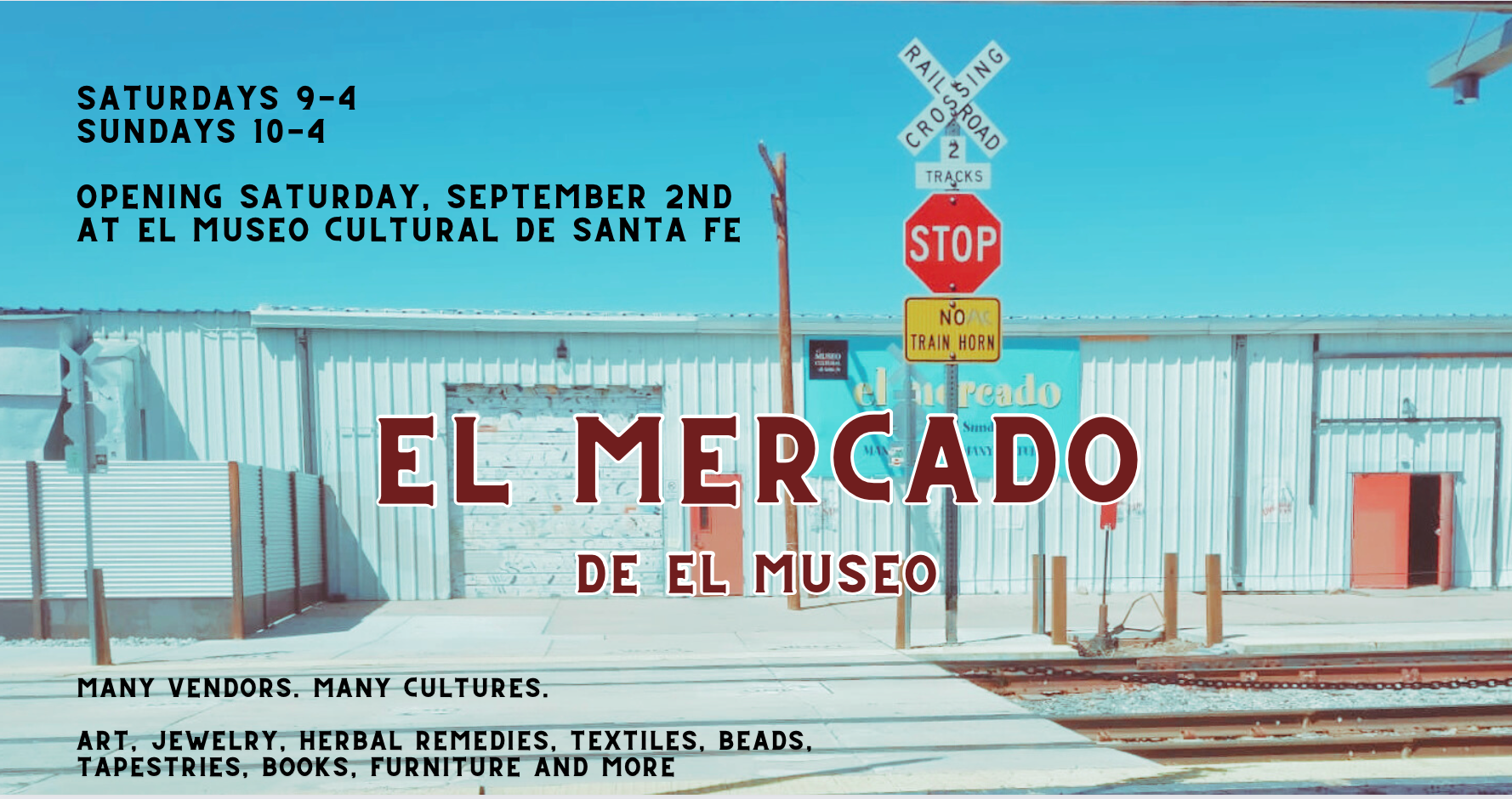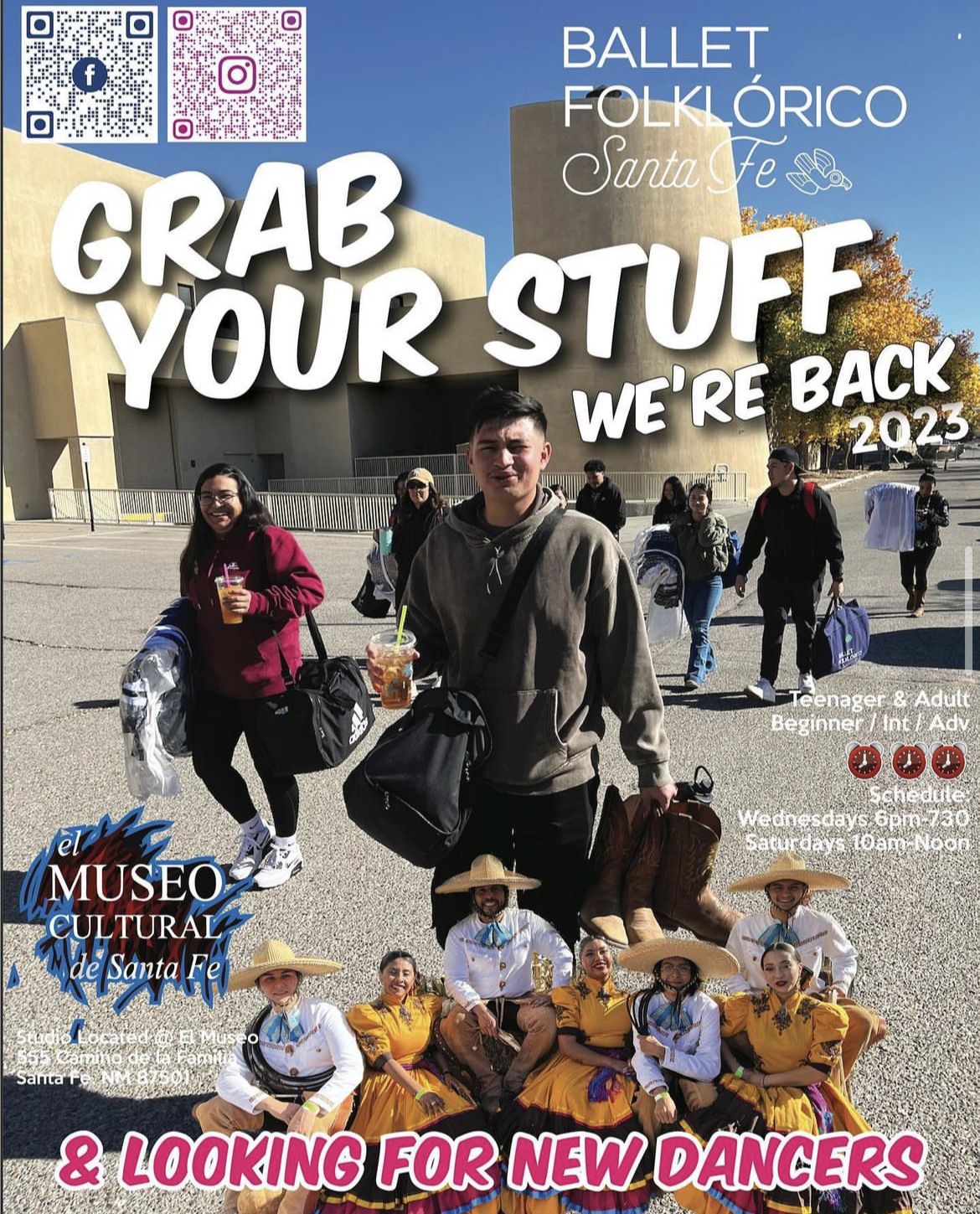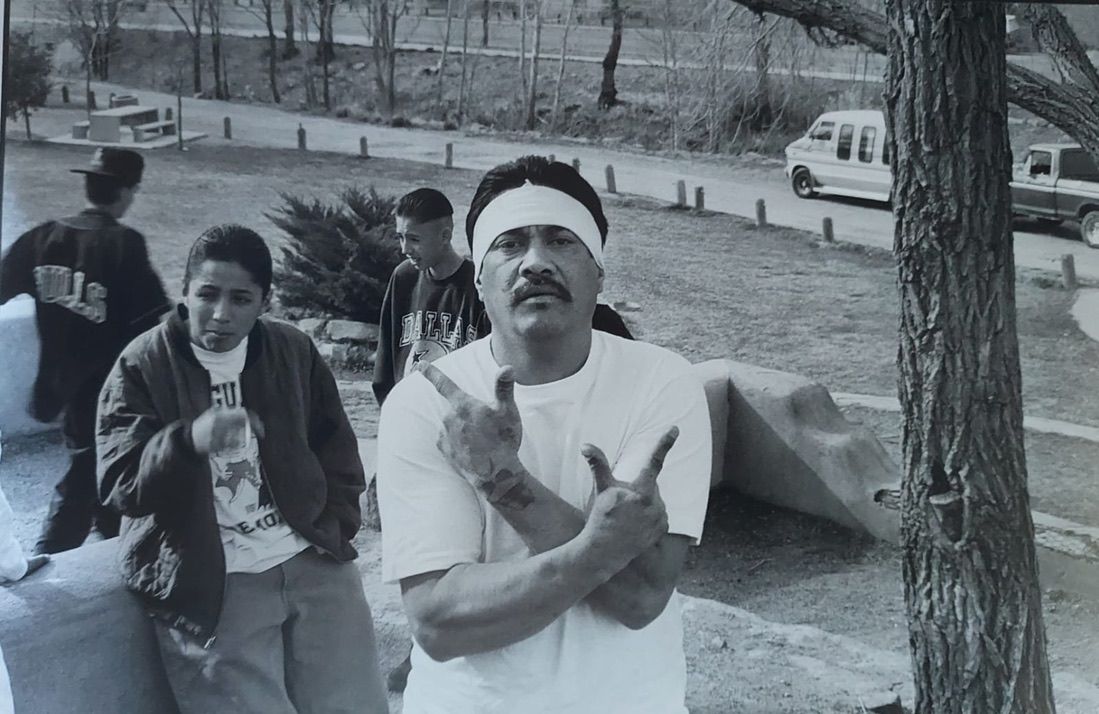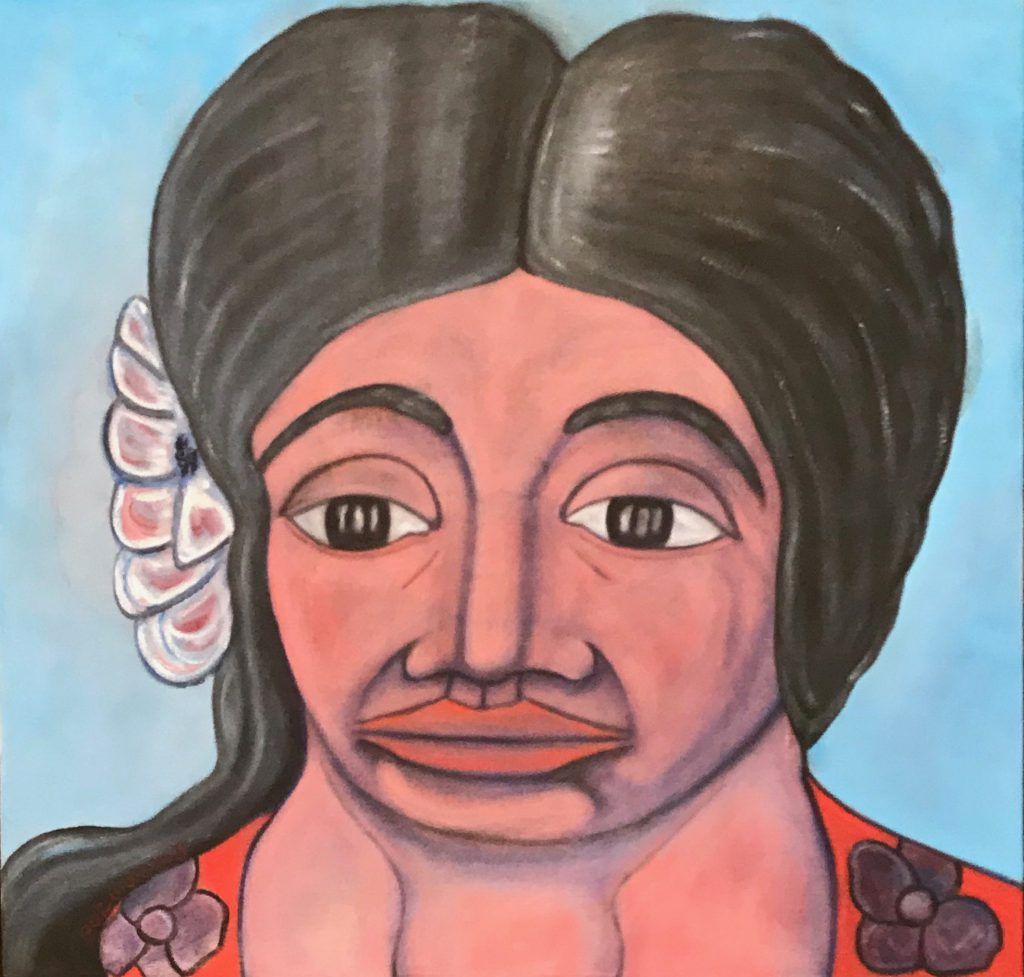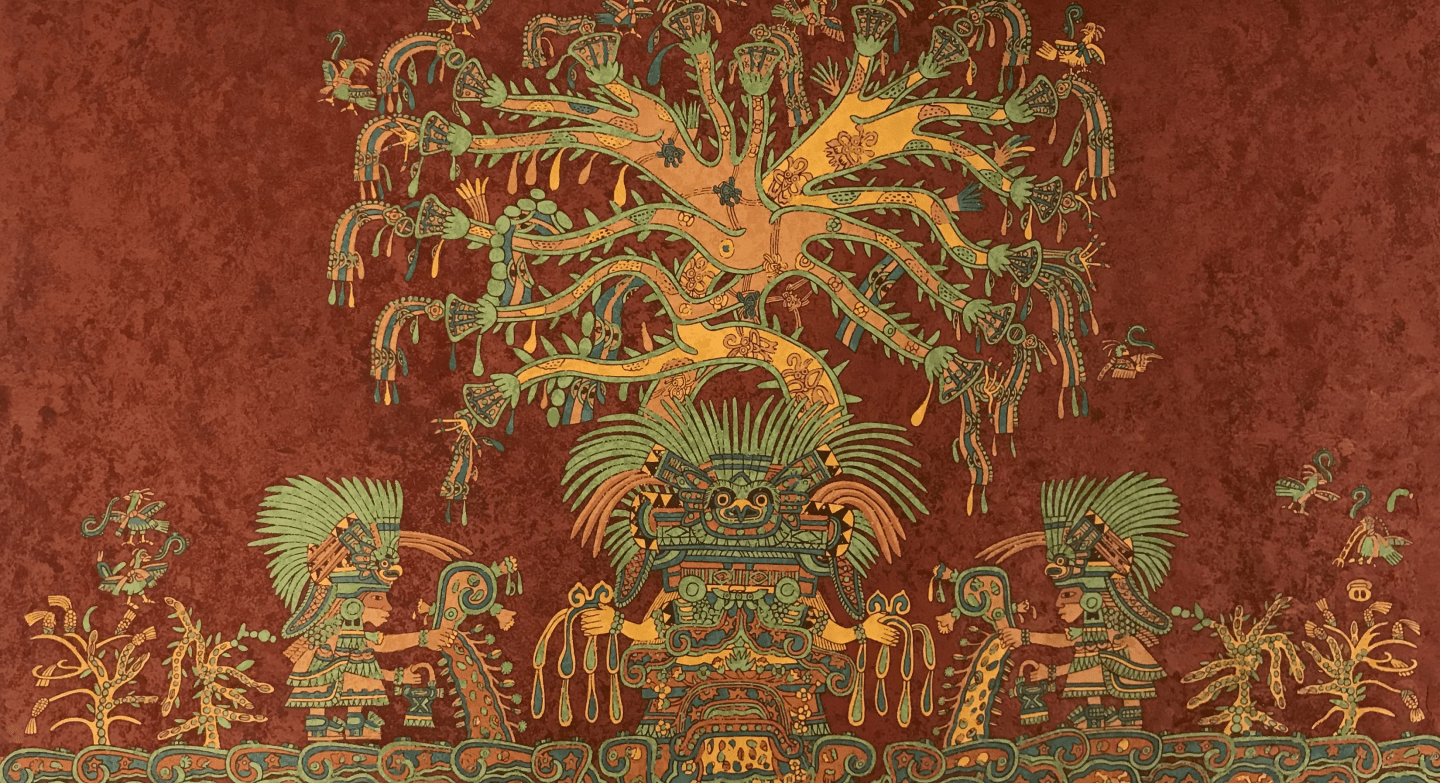
¡Bienvenidos a el Museo!
What’s happening
Art Highlights
Our History
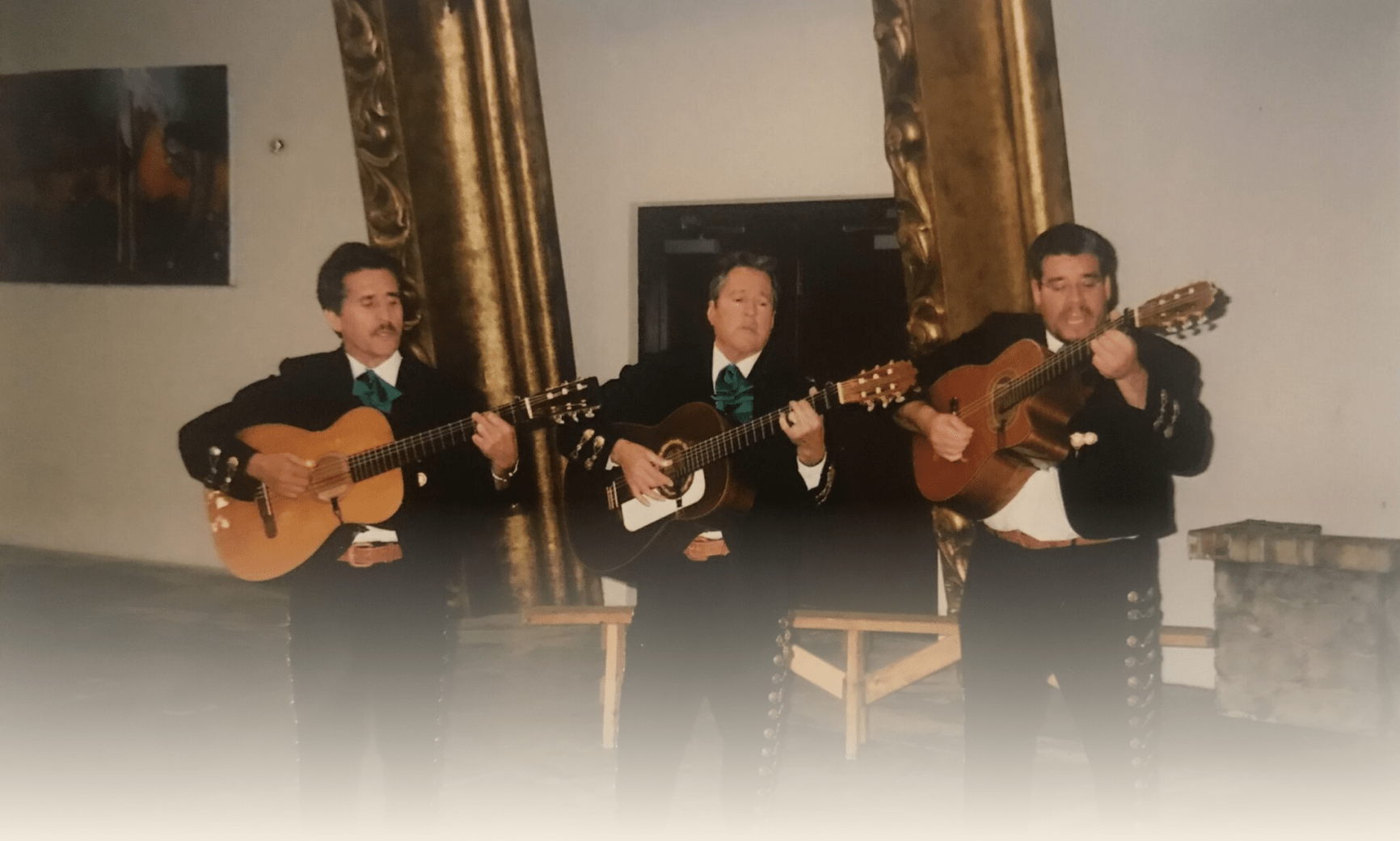
From an empty warehouse to a House full of Gente y Cultura
In the summer of 1993, the Santa Fe Community College received a $5,000 grant from the City of Santa Fe Arts Commission to facilitate a Hispanic exhibit with no parameters regarding the size or type of activity or exhibit. The college entrusted the project to The Intercultural Leadership project which in turn included a diverse group of community members to decide the type and direction of any activity.
This community group had a number of extensive, lively discussions about whether to call ourselves Chicanos, raza, Mexicanos, Latinos, Hispanics, Indo-Hispano, etc…and why? Also, how would we go about identifying our target population while at the same time being inclusive of all our community? The steering committee also wanted to recruit artistic talents from all walks of life, especially those in our community who have limited or no access to galleries or other avenues of sharing their talents and skills with the public in general and our community in particular. We wanted to include all the villages of Northern New Mexico, recognizing that we are all manitos, historically and culturally we are all related and our communities have always been hospitable, generous, and inclusive of our vecinos, and we wanted to continue these traditions.
The first event in the summer of 1993 was called Feria Cultural and it was held at the Santa Fe Community College. 130 visual and performing artists participated and over 2,000 people attended. Feria Cultural II and III were also held at the college and were equally successful. The events were interdisciplinary art shows characterized by the participation of over 150 artists ranging in age from 7 to 79 years of age. Art categories included weaving, singing, painting, dancing, wood carving, poetry, furniture making, chistes, cuentos, music, and many more categories. Some of the artists were well known in their respective fields and others had never shown their work outside of family and close friends.
The events turned into an opportunity to pay respect and honor all the people of our community and the various ways that we express our cultural and personal identity, whether this expression be visual, through performance, contemporary or traditional. Between cooking demonstrations, auto spray painting, custom motorcycles and cars, three performing art stages and hundreds of visual art exhibits, people found the opportunity to visit with each other and reminisce about earlier times when the local people could attend events that were truly community-oriented and offered opportunities for all of us to reestablish and strengthen the concept of comunidad y cultura, or community and culture.
The most important part of the events was that they were planned and organized by local community people. These kinds of efforts are symbolic of the ability of our community to create culturally relevant events with minimum resources and without the problems that bureaucratic processes sometimes bring with them.
The success of the events prompted a spontaneous forum or symposium organized by participants and community members who enjoyed the experience and wanted to be involved in future like-minded efforts. Many issues were discussed and contemplated. One of the main concerns of the participants was that in a city that capitalizes on the Chicano culture as a means of attracting hundreds of millions of tourist dollars there exists a dire need for some kind of coordinated establishment to the needs of local people to market the very kind of artistic and creative works that the city and state use to draw in revenue. It seems a consensus among native raza locals that there is a lack of avenues for our community to tap into the millions of dollars that flow into this city. It seems that we are not in control of any means of economic growth ideas that may benefit our community.
The public forums sprouted a local community-led effort to pursue a dream of organizing community and public support for creating a community run Hispano/Chicano cultural center, obtaining a property or building in the downtown area that would truly be accessible to all members of our community for events, activities and projects that preserve and promote our cultural richness. We envisioned a center that would be interactive, inviting and educational as well as artistic and cultural.
Here we are 11 years later (30 years later, if you’re reading this in 2023) and the dream has manifested itself into el Museo Cultural de Santa Fe. From a 1,000-square-foot dilapidated space in a warehouse that was obtained with help from Mayor Debbie Jaramillo’s administration, el Museo Cultural has grown into a 31,000-square-foot multi-use building that hosts a mind-boggling number of activities and presentations. -Tomas and Beatríz Vigíl, Founding members of el Museo
Originally published in 2004, revised in 2023
This community group had a number of extensive, lively discussions about whether to call ourselves Chicanos, raza, Mexicanos, Latinos, Hispanics, Indo-Hispano, etc…and why? Also, how would we go about identifying our target population while at the same time being inclusive of all our community? The steering committee also wanted to recruit artistic talents from all walks of life, especially those in our community who have limited or no access to galleries or other avenues of sharing their talents and skills with the public in general and our community in particular. We wanted to include all the villages of Northern New Mexico, recognizing that we are all manitos, historically and culturally we are all related and our communities have always been hospitable, generous, and inclusive of our vecinos, and we wanted to continue these traditions.
The first event in the summer of 1993 was called Feria Cultural and it was held at the Santa Fe Community College. 130 visual and performing artists participated and over 2,000 people attended. Feria Cultural II and III were also held at the college and were equally successful. The events were interdisciplinary art shows characterized by the participation of over 150 artists ranging in age from 7 to 79 years of age. Art categories included weaving, singing, painting, dancing, wood carving, poetry, furniture making, chistes, cuentos, music, and many more categories. Some of the artists were well known in their respective fields and others had never shown their work outside of family and close friends.
The events turned into an opportunity to pay respect and honor all the people of our community and the various ways that we express our cultural and personal identity, whether this expression be visual, through performance, contemporary or traditional. Between cooking demonstrations, auto spray painting, custom motorcycles and cars, three performing art stages and hundreds of visual art exhibits, people found the opportunity to visit with each other and reminisce about earlier times when the local people could attend events that were truly community-oriented and offered opportunities for all of us to reestablish and strengthen the concept of comunidad y cultura, or community and culture.
The most important part of the events was that they were planned and organized by local community people. These kinds of efforts are symbolic of the ability of our community to create culturally relevant events with minimum resources and without the problems that bureaucratic processes sometimes bring with them.
The success of the events prompted a spontaneous forum or symposium organized by participants and community members who enjoyed the experience and wanted to be involved in future like-minded efforts. Many issues were discussed and contemplated. One of the main concerns of the participants was that in a city that capitalizes on the Chicano culture as a means of attracting hundreds of millions of tourist dollars there exists a dire need for some kind of coordinated establishment to the needs of local people to market the very kind of artistic and creative works that the city and state use to draw in revenue. It seems a consensus among native raza locals that there is a lack of avenues for our community to tap into the millions of dollars that flow into this city. It seems that we are not in control of any means of economic growth ideas that may benefit our community.
The public forums sprouted a local community-led effort to pursue a dream of organizing community and public support for creating a community run Hispano/Chicano cultural center, obtaining a property or building in the downtown area that would truly be accessible to all members of our community for events, activities and projects that preserve and promote our cultural richness. We envisioned a center that would be interactive, inviting and educational as well as artistic and cultural.
Here we are 11 years later (30 years later, if you’re reading this in 2023) and the dream has manifested itself into el Museo Cultural de Santa Fe. From a 1,000-square-foot dilapidated space in a warehouse that was obtained with help from Mayor Debbie Jaramillo’s administration, el Museo Cultural has grown into a 31,000-square-foot multi-use building that hosts a mind-boggling number of activities and presentations. -Tomas and Beatríz Vigíl, Founding members of el Museo
Originally published in 2004, revised in 2023
Get involved
Your gift helps El Museo to exist and continue our efforts in promoting Northern New Mexican Culture in the community.
